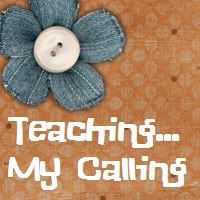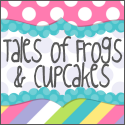Did you know that April is National Poetry Month? When I was teaching 3rd
If you are looking for more poetry ideas, Laurah from ESOL Odyssey is having a linky party specifically for poetry products – stop by and check it out.
Did you know that April is National Poetry Month? When I was teaching 3rd
If you are looking for more poetry ideas, Laurah from ESOL Odyssey is having a linky party specifically for poetry products – stop by and check it out.

 deck of cards. Split the cards into a red pile and a black pile and then you can 2 students or two groups of students can share one deck of cards. If students need to use the same letter more than once, they may need two “half” decks of cards. Have students use the code sheet to spell their spelling and/or vocabulary words with their half of a deck of cards. Grab the code word sheet for FREE from Google Docs.
deck of cards. Split the cards into a red pile and a black pile and then you can 2 students or two groups of students can share one deck of cards. If students need to use the same letter more than once, they may need two “half” decks of cards. Have students use the code sheet to spell their spelling and/or vocabulary words with their half of a deck of cards. Grab the code word sheet for FREE from Google Docs. students need to use the same letter more than once, they may need two “half” decks of cards. Students will make words of different lengths. Have students start by trying to make 3 letter words, then 4 letter words, then 5 letter words. Students can also race to see who can make the most words – using the code with the cards they have. Grab the code word sheet and mats for FREE from Google Docs.
students need to use the same letter more than once, they may need two “half” decks of cards. Students will make words of different lengths. Have students start by trying to make 3 letter words, then 4 letter words, then 5 letter words. Students can also race to see who can make the most words – using the code with the cards they have. Grab the code word sheet and mats for FREE from Google Docs. cards and set to the side – the Ace remains and counts as 1. Students will “draw” cards to put on one of the story maps. These story maps will give students guidelines on what needs to be in their story (ie. 5 sentences, 1 character, 2 settings and 1 surprise). Students will then take what the cards have determined and write a story using that criteria. Grab 2 different story guideline mats for FREE from Google Docs.
cards and set to the side – the Ace remains and counts as 1. Students will “draw” cards to put on one of the story maps. These story maps will give students guidelines on what needs to be in their story (ie. 5 sentences, 1 character, 2 settings and 1 surprise). Students will then take what the cards have determined and write a story using that criteria. Grab 2 different story guideline mats for FREE from Google Docs. to put on one of the story maps. These story maps will give students guidelines on what needs to be in their story – rather than dictating length and elements, these story maps will dictate silly things they must work into their story – leading to creativity and critical thinking (ie. 5 cats, 1 grizzly bear, 2 unicorns and 1 bowl of soup). Students will then take what the cards have determined and write a story using that criteria. Grab 4 different story guideline mats for FREE from Google Docs.
to put on one of the story maps. These story maps will give students guidelines on what needs to be in their story – rather than dictating length and elements, these story maps will dictate silly things they must work into their story – leading to creativity and critical thinking (ie. 5 cats, 1 grizzly bear, 2 unicorns and 1 bowl of soup). Students will then take what the cards have determined and write a story using that criteria. Grab 4 different story guideline mats for FREE from Google Docs. 
One of the best parts of teaching at an International School is that I get to connect with  teachers who have taught all around the world. I enjoy this concept so much that I decided to start a blog that will give this experience to everyone. This blog, called Global Teacher Connect, will have authors from around the world posting about what is going on in their classroom and what resources they are using with their students. We will have no more than 5 authors per country, so we can keep it diverse, but we will have many, many countries represented. Already we have authors from: South Africa, the Netherlands, Spain, France, Trinidad/Tobago, the United States, and of course – Morocco!
teachers who have taught all around the world. I enjoy this concept so much that I decided to start a blog that will give this experience to everyone. This blog, called Global Teacher Connect, will have authors from around the world posting about what is going on in their classroom and what resources they are using with their students. We will have no more than 5 authors per country, so we can keep it diverse, but we will have many, many countries represented. Already we have authors from: South Africa, the Netherlands, Spain, France, Trinidad/Tobago, the United States, and of course – Morocco!
We are currently looking for more authors, so if you would be interested in being an author, please feel free to contact me at hlraki@hotmail.com. Whether you are interested in writing or not, please feel free to stop by and view the discussions. Right now, we have a very interesting discussion going on about how substitute teaching is handled in countries around the world – started by Melissa of Dilly Dabbles. Can’t wait to see your contributions to the discussions!
 My students are currently studying 2-dimensional and 3-dimensional shapes. We have been using this cool website from Primary Resources to help them identify 3-dimensional shapes even when they see them from different angles or without the entire shape. This concept can be hard for my students, but this great website that shows partially buried and angled 3-dimensional shapes really helped.
My students are currently studying 2-dimensional and 3-dimensional shapes. We have been using this cool website from Primary Resources to help them identify 3-dimensional shapes even when they see them from different angles or without the entire shape. This concept can be hard for my students, but this great website that shows partially buried and angled 3-dimensional shapes really helped. 


 addition, my student often know words that help them out at school, where they use English, but not words that would help them out at home, where they don’t. So, it’s not unusual for my students to know words like connection, punctuation mark, and cylinder, but don’t know words like knee, spoon and shovel.
addition, my student often know words that help them out at school, where they use English, but not words that would help them out at home, where they don’t. So, it’s not unusual for my students to know words like connection, punctuation mark, and cylinder, but don’t know words like knee, spoon and shovel. more about teaching English Language Learners? I will be speaking on this topic at the Everything’s Intermediate Expo, and I’d love to have you “join” us. It is a virtual expo, which will help us connect no matter where we are! Click HERE for ticket information.
more about teaching English Language Learners? I will be speaking on this topic at the Everything’s Intermediate Expo, and I’d love to have you “join” us. It is a virtual expo, which will help us connect no matter where we are! Click HERE for ticket information.![signature_thumb1_thumb1_thumb_thumb_[1] signature_thumb1_thumb1_thumb_thumb_[1]](https://blogger.googleusercontent.com/img/b/R29vZ2xl/AVvXsEi6qxXxjkQKJH-JHuAeb-qDMD3WgAFFnMx5y6kYIRQRWJ7tMGCoyGrAW9WEJvCsA8dPeHLEeruz2wlwudiFq7GIDGnV78N_LBqh4ND3MV9Ce2FYXhPYH9c-F0p-YZ3z2eUgKUU3fAV_9by0/?imgmax=800)
Teaching English Language Learners is a passion of mine. It is part of the
Then, Laurah from the ESOL Odyssey asked me to write an article on  the difference between teaching English as a Second Language and teaching English as a Foreign Language. That article will be posted on Wednesday, March 28th. Please stop by on Wednesday and check it out.
the difference between teaching English as a Second Language and teaching English as a Foreign Language. That article will be posted on Wednesday, March 28th. Please stop by on Wednesday and check it out.
Thank you to all who entered the contest for the Everything’s 
Without further ado, here are the winners:
Ticket #1
Ticket #2
Ticket #3
Congratulations to Pam Atkinson, Melissa Lawrence and Heather Temske! They will soon be receiving their ticket via email and will all be able to attend professional development in their pj’s (if they so choose) for absolutely FREE! If you aren’t one of my lucky winners, but you want to join us on this fun event, feel free to stop by the Everything’s Intermediate Expo page and grab a ticket for just $14.95 until the day of the event.
Also, if you have a chance, stop by the blogs of the other presenters to learn about the amazing things they have planned:


